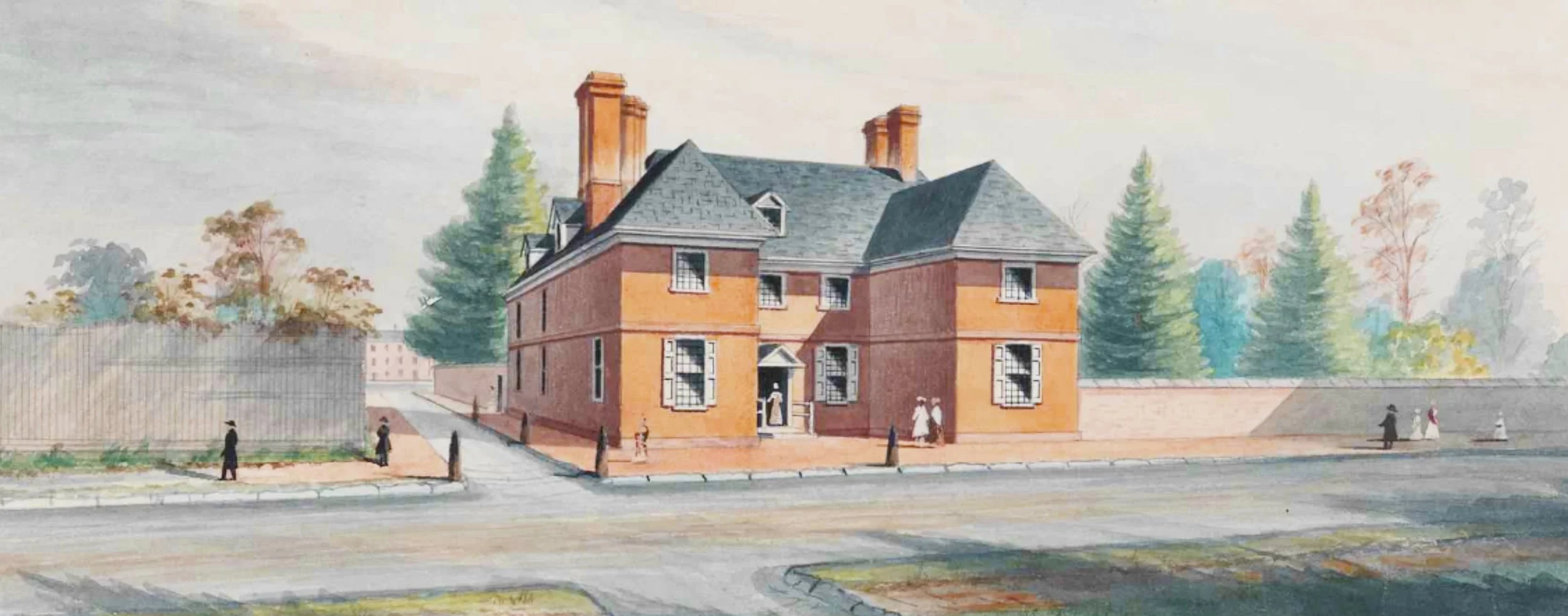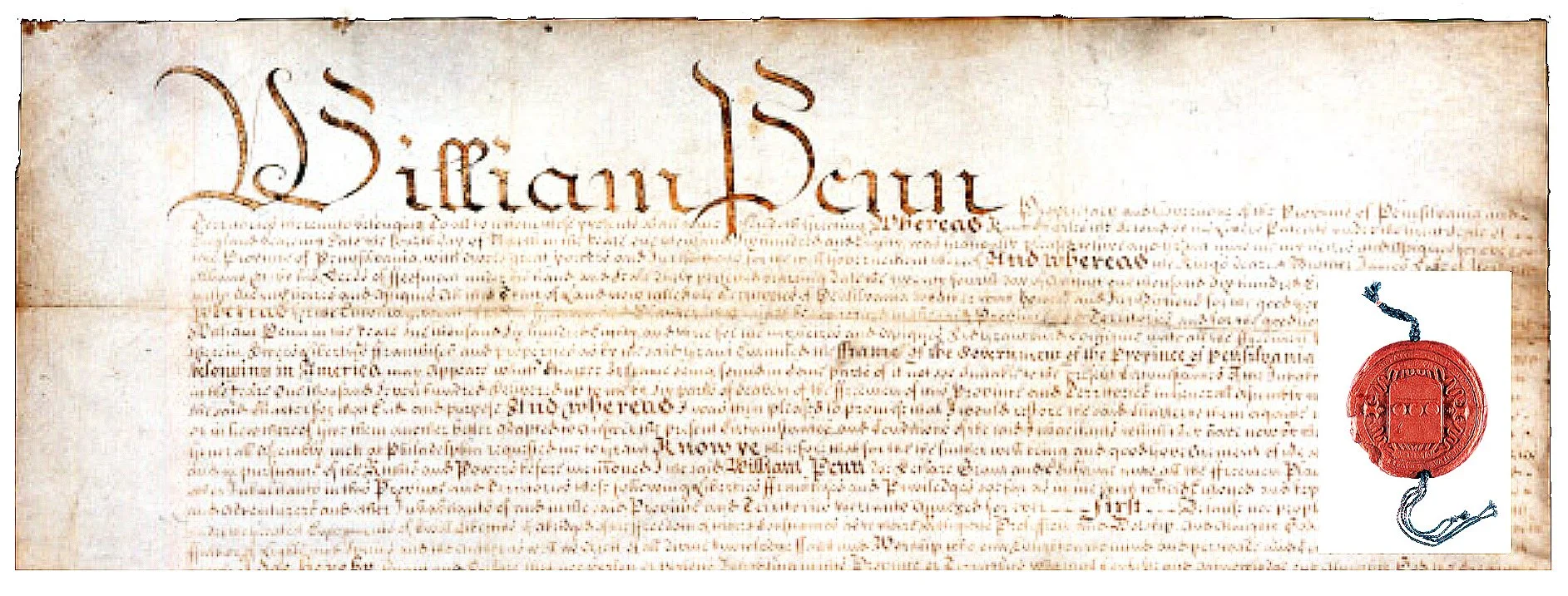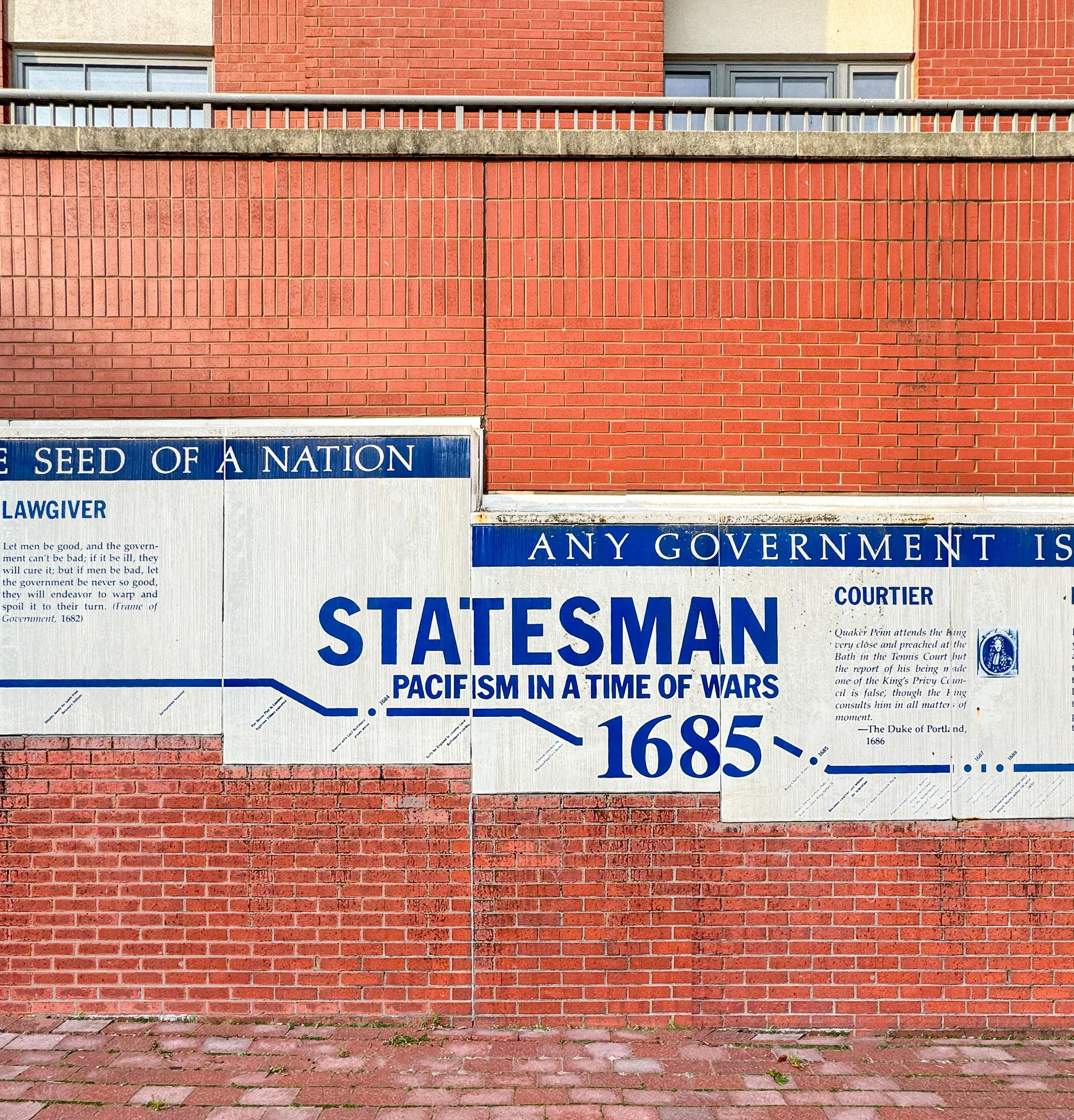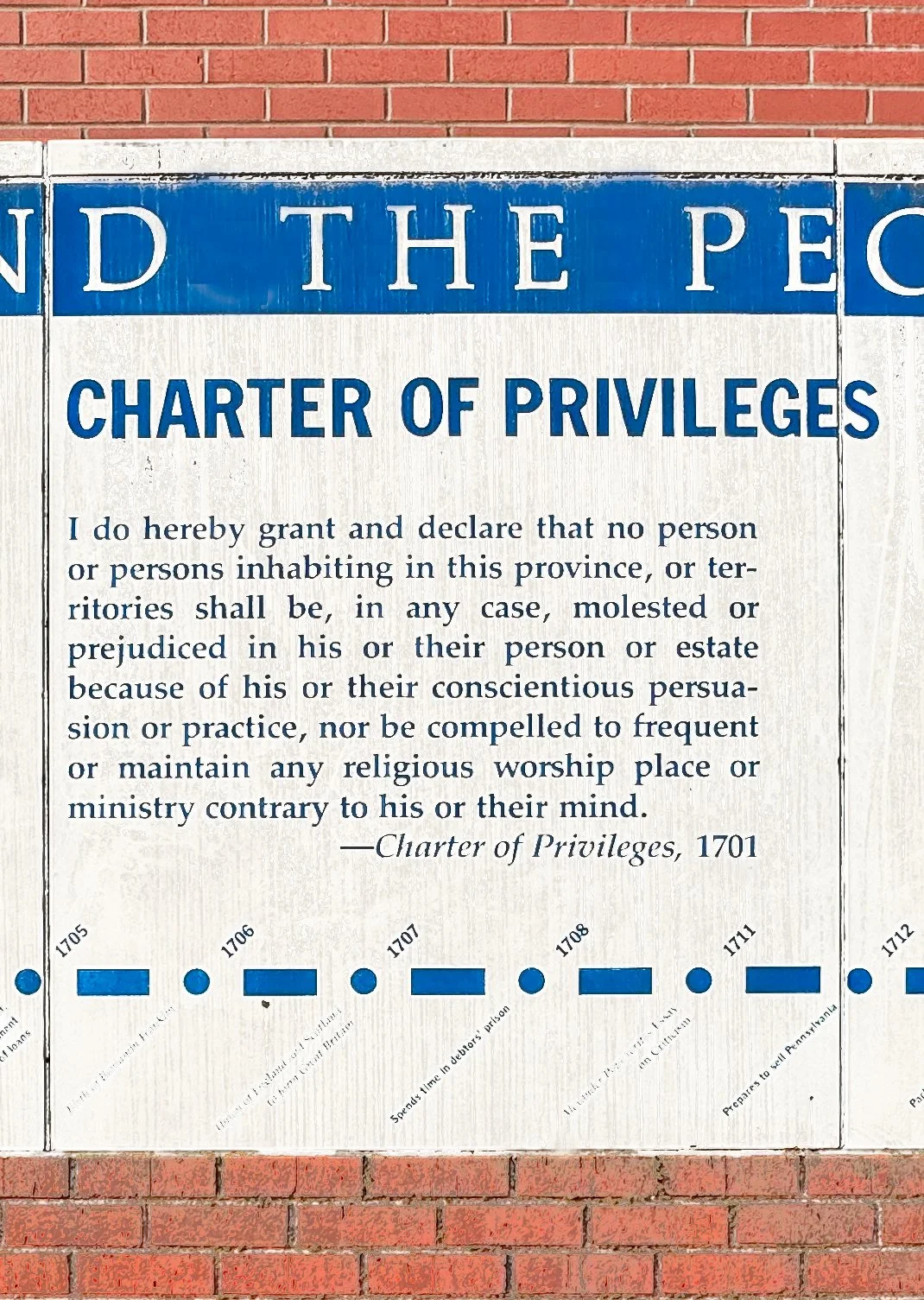Historic Quaker Houses of Philadelphia
Gone but not Forgotten:
The Slate-Roof House
A Monument to Progressive Quaker Politics
Birthplace of William Penn’s Charter of Privileges in 1701:
Image sources: “The Old Slate-Roof House”, John Meredith Read, 1868. The Historic Mansions…, Thompson Westcott, 1877.
William Penn lived in the Slate-Roof House for two year (1699-1701) during his second visit to Pennsylvania. He lived here with wife Hannah (Callowhill) Penn. Their son John Penn was born in this house during that time. During this time the Penns also maintained their country house at Pennsbury Manor.
It was at the Slate Roof House that William Penn wrote his Charter of Privileges, a progressive guide for Pennsylvania’s government.
Above: Watercolor of the Slate-Roof House by David Johnston Kennedy. Image source: Historical Society of Pennsylvania
Above: Plan of the Slate Roof House, ca. 1709. Image source: Historical Society of Pennsylvania
The Slate-Roof House
1701: Birthplace of Penn’s Declaration of Freedoms
A Revolutionary Quaker Vision of Liberty:
Above: Details of William Penn’s Charter of Privileges. Image source: American Philosophical Society.
William Penn’s Charter of Privileges
One of the Most Progressive Documents of its Era:
William Penn’s Charter of Privileges (1701) was one of the most progressive political documents of its era. The Charter granted unusually broad religious toleration, especially for the time. It protected the rights of all monotheists, and Pennsylvania became a haven for Quakers, Mennonites, Jews, and others. The charter served as Pennsylvania’s constitution until the American Revolution.
1. Religious TolerationThe charter guaranteed freedom of conscience and worship regardless of denomination. Even for non-Christians the charter allowed religious freedom and property rights. At a time when many European governments had official state churches and punished dissenters, this was a radical departure.
2. Separation of Civil and Religious AuthorityWhile not a full modern separation of church and state, Penn's framework avoided government control over religious practice and opened civil office to people of different Christian sects. That inclusivity was rare among colonies that often imposed religious tests for office.
3. Democratic Self-GovernmentThe charter gave greater legislative power to the elected assembly than most other colonial governments allowed. It let the Assembly initiate legislation, not just approve laws proposed by the governor — a progressive step toward participatory governance.
4. Rights of CitizensIt established rights that prefigured elements of later democratic documents, including freedom from arbitrary seizure of property, trial by jury, and limits on the power of the executive.
William Penn Presents his Charter of Privileges
A Statue at Pennsylvania Hospital:
Above: William Penn points to his Charter of Privileges. His grandson, John Penn, discovered this statue of his famous grandfather in a London antiques shop. He presented it to Pennsylvania Hospital in 1804. British sculptor John Cheere created the statue in 1774 for Francis Dashwood, owner of West Wycombe Park in Buckinghamshire, England. Image source: Lee J. Stoltzfus.
Welcome Park
Site of William Penn’s Slate-Roof House:
Above: William Penn gazes over Welcome Park, site of his former home, the Slate-Roof House. The house does not survive but William Penn’s legacy continues. Today a memorial plaza is located on the site to commemorate the life of William Penn, Philadelphia’s founding father. The statue is a cast of a smaller version of Alexander Milne Calder’s statue above City Hall.
This pocket park was created in 1983 by Friends of Independence National Historic Park and the Pew Memorial Trust. The plaza commemorates the 300th anniversary of William Penn’s arrival in Pennsylvania on the ship Welcome.
The architectural firm Venturi, Rauch & Scott Brown designed the plaza which opened in 1982. Included here is a statue of William Penn and a small bronze model of the house. Image source: Lee J. Stoltzfus.
William Penn’s Quaker Ideals
Posted on the Wall at Welcome Park:
Above: A timeline of the life of William Penn on a wall at Welcome Park.
Above: The Charter of Privileges commemorated at the Welcome Park.
Philadelphia’s First Revolution -
William Penn’s Charter of Privileges
Described by Historian George E. Thomas:
George E. Thomas is a leading authority on Philadelphia’s architectural and urban history. In 2024 he explained the importance of William Penn’s revolutionary Charter of Privileges. In a letter to the editor Thomas wrote:
“ …I have grown to see Philadelphia as the center of a series of revolutions that created the modern world—with 1776 as one, but also the first computer, and more recently mRNA vaccines. But the first revolution was that initiated by Penn in his Charter of Privileges of 1701 that began, ‘Because no People can be truly happy, though under the Greatest Enjoyment of Civil Liberties, if abridged of the Freedom of their Consciences as to their Religious Profession and Worship.’ That is why Penn should be commemorated in the city that he founded…” Quote: Historian George E. Thomas, The Philadelphia Inquirer, January 11, 2024.
Links:








